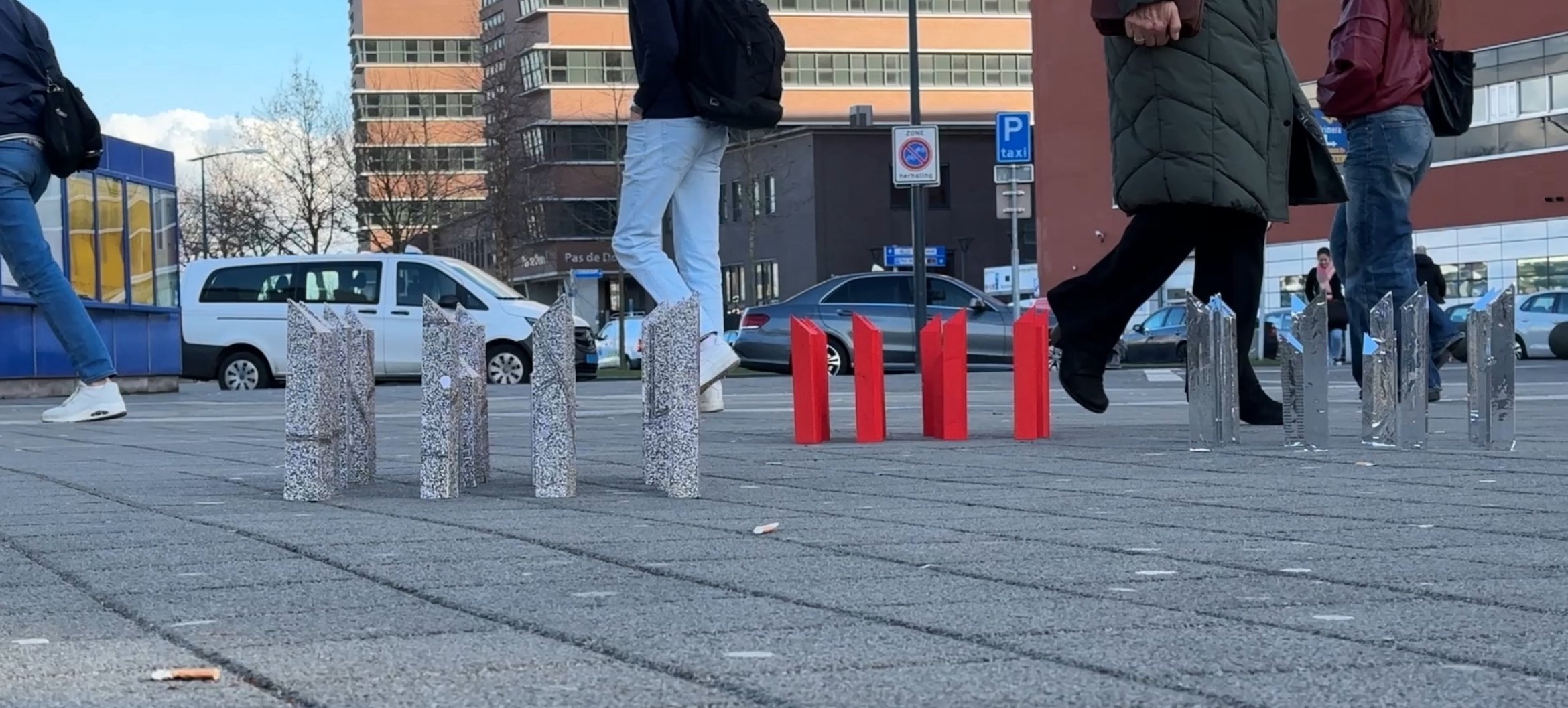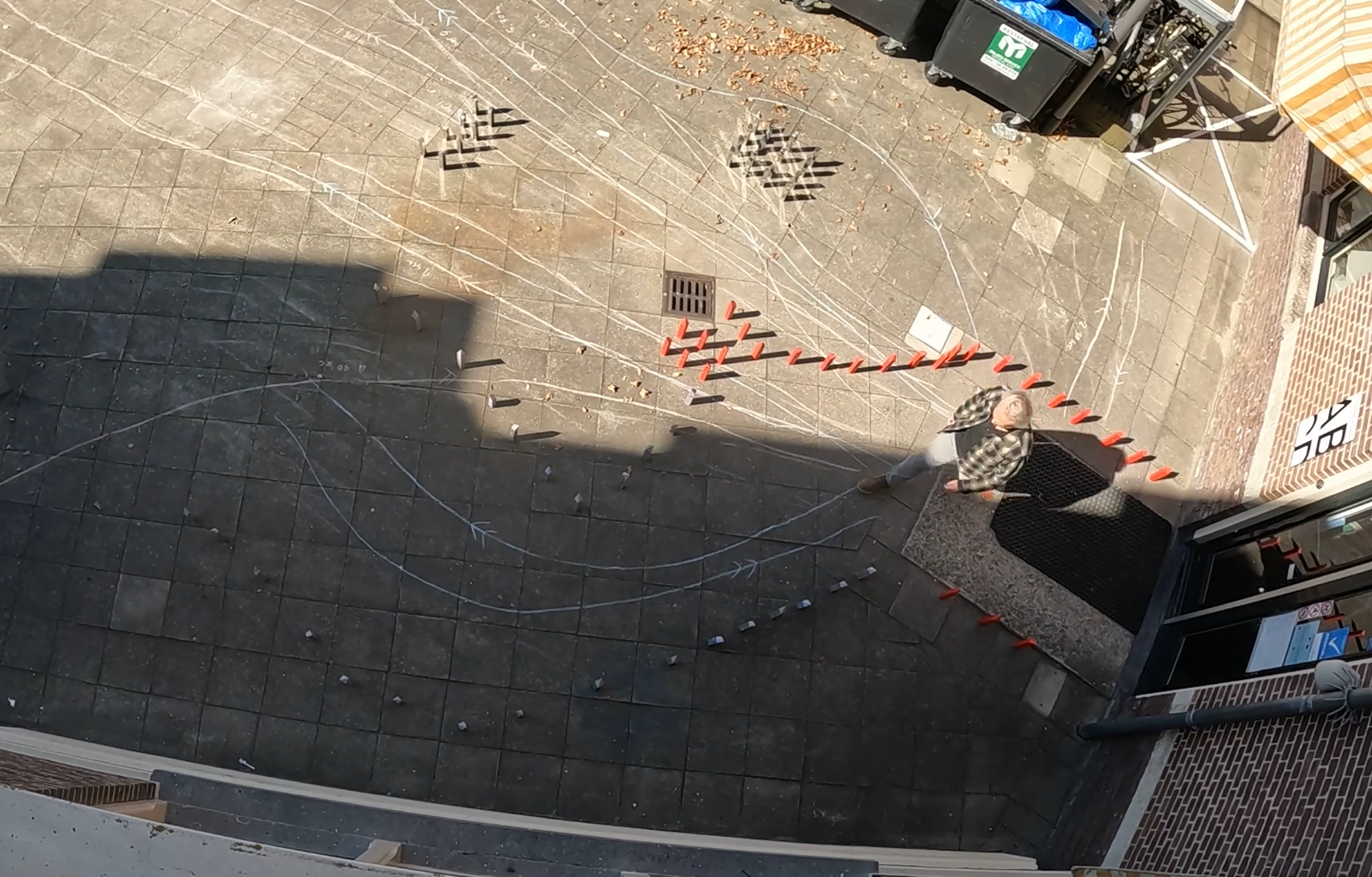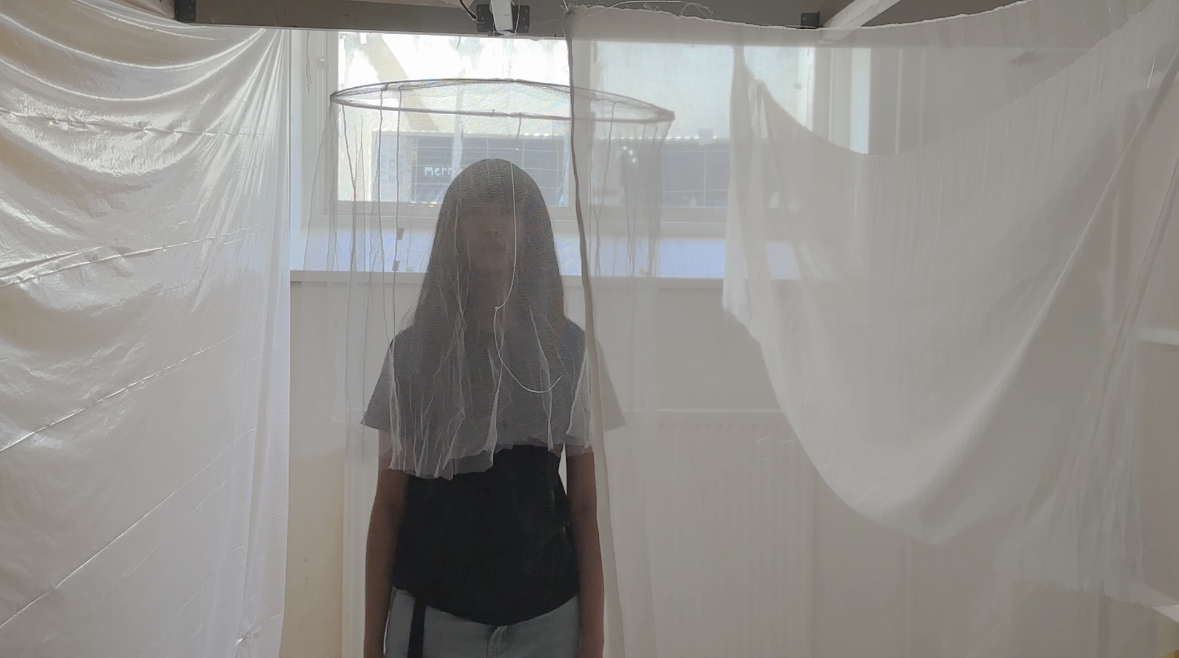Li Wang

Spatial Drift: Using Human Movement to Create Spatial Configuration
What is the distance between people?
This simple question led me further into a deeper inquiry: How can this distance create space? And how does this distance influence space? Over the past two years of my master’s program, I’ve been exploring this through both theoretical and practical research. Through a series of experiments, I’ve developed different methodologies to address this question.
It all began with something very personal—my daily metro commute. Through observation, I realized that what appeared to be simple crowd control might actually hold the potential to create space. My research started with an exploration of how people define and negotiate personal space, which led me to the concept of social distance. This investigation became the foundation of my research paper: "The Influence of Social Distance in the Spatial Configuration of Public Space" —a study of how social distance shapes crowd movement, how interventions guide behavior, and a comparison of two approaches:“Architecture first, behavior follows” versus “Behavior first, design adapts.” In this context, social distance is understood as a shifting boundary—constantly shaped by human behavior, which in turn defines how space is used and perceived.
My graduation project, “How to Use Human Movement to Create Spatial Configuration,” expands on this by translating theory into public experiments. From these, I developed an initial theory: Crowds are shaped by earlier layers of people, who respond to objects placed in space.
Based on this, I designed and categorized object-based interventions into three traits: attraction, restriction, and nudge, each defined by their materiality and placement. To observe how people respond to these interventions, I conducted a series of experiments in public spaces, such as train station and university campus.

In a second approach developed during a workshop, participants passed a "paper wall" from one person to the next. This choreographed act created a dynamic interaction, an interweaving of movement and object. From this, I discovered a new dimension: The moment the object is passed from a crowd to another crowd, their roles switch. This revealed that the relationship between movement and space is not fixed but reversible and fluid. This led me to the final conclusion of my research. When people move objects, their movements, combined with the objects, form walls or columns. This expresses spatial intervention in its three traits:
- Attraction: Distance creates attraction. What’s just out of reach changes how we move.
- Restriction: Human presence and movement bring solidity, like walls and columns.
- Nudge: A nudge is an indirect, non-coercive form of guidance, represented in my work by fabric placed in space.
In my final exhibition, I present the core concept: “Human movement and its density shape the architectural structure—manifested through walls and columns alone.” By focusing on how people behave, move, and respond to spatial cues, we can begin to design not from fixed forms, but from movement itself.

This page was last updated on June 24, 2025